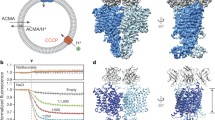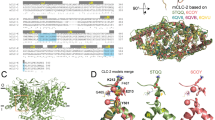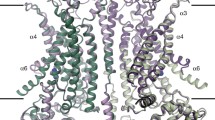Abstract.
Many plasma membrane chloride channels have been cloned and characterized in great detail. In contrast, very little is known about intracellular chloride channels. Members of a novel class of such channels, called the CLICs (chloride intracellular channels), have been identified over the last few years. A striking feature of the CLIC family of ion channels is that they can exist in a water-soluble state as well as a membrane-bound state. A major step forward in understanding the functioning of these channels has been the recent crystal structure determination of one family member, CLIC1. The structure confirms that CLICs are members of the glutathione S-transferase superfamily and provides clues as to how CLICs can insert into membranes to form chloride channels.
Similar content being viewed by others
Author information
Authors and Affiliations
Additional information
Electronic Publication
Rights and permissions
About this article
Cite this article
Cromer, B.A., Morton, C.J., Board, P.G. et al. From glutathione transferase to pore in a CLIC. Eur Biophys J 31, 356–364 (2002). https://doi.org/10.1007/s00249-002-0219-1
Received:
Accepted:
Issue Date:
DOI: https://doi.org/10.1007/s00249-002-0219-1




